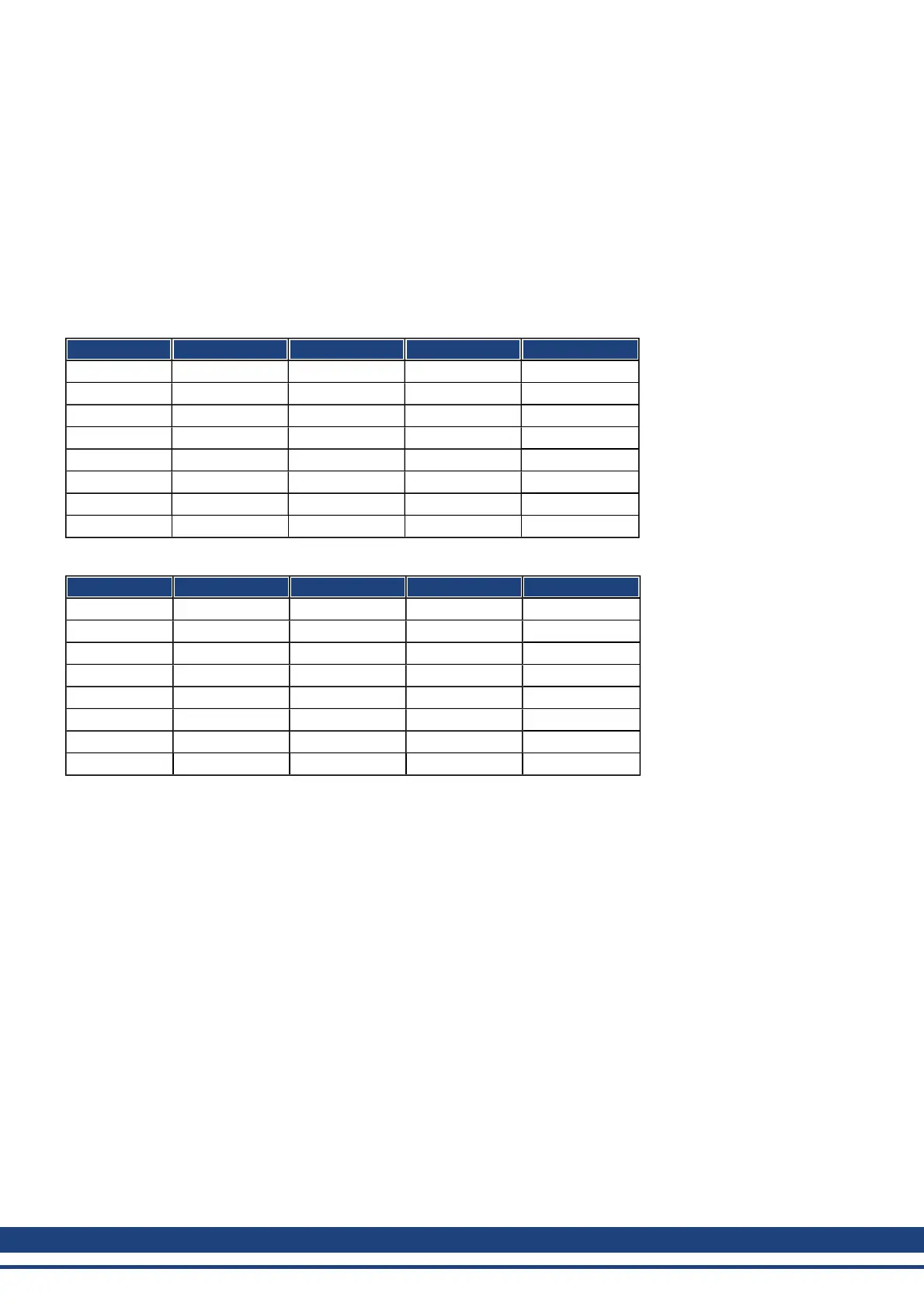AKD User Guide |
Signed Integer
Data in the basic data type INTEGERn define both positive and negative integers.
The value range is from -2
n-1
-1 to 2
n-1
-1. The bit sequence b = b
0
to b
n-1
defines the value
INTEGERn(b) = b
n-2
2
n-2
+ to + b
1
2
1
+ b
0
2
0
with b
n-1
= 0
Negative numbers are represented as 2’s complement, which means:
INTEGERn(b) = - INTEGERn(b) - 1 with b
n-1
= 1
Example: the value -266 = FEF6h is transmitted in the data type INTEGER16, in the form of two octets (1
st
octet
= F6h, 2
nd
octet = FEh).
Transmission syntax for the data type INTEGERn
Octet number 1. 2. 3. 4.
INTEGER8 b
7
to b
0
INTEGER16 b
7
to b
0
b
15
to b
8
INTEGER24 b
7
to b
0
b
15
to b
8
b
23
to b
16
INTEGER32 b
7
to b
0
b
15
to b
8
b
23
to b
16
b
31
to b
24
INTEGER40 b
7
to b
0
b
15
to b
8
b
23
to b
16
b
31
to b
24
INTEGER48 b
7
to b
0
b
15
to b
8
b
23
to b
16
b
31
to b
24
INTEGER56 b
7
to b
0
b
15
to b
8
b
23
to b
16
b
31
to b
24
INTEGER64 b
7
to b
0
b
15
to b
8
b
23
to b
16
b
31
to b
24
Octet number 5. 6. 7. 8.
INTEGER8
INTEGER16
INTEGER24
INTEGER32
INTEGER40 b
39
to b
32
INTEGER48 b
39
to b
32
b
47
to b
40
INTEGER56 b
39
to b
32
b
47
to b
40
b
55
to b
48
INTEGER64 b
39
to b
32
b
47
to b
40
b
55
to b
48
b
63
to b
56
20.5.3.2 Mixed data types
Mixed data types combine basic data types (INTEGERn, UNSIGNEDn, REAL). Two types of mixed data are dis-
tinguished:
l STRUCT: This data type is composed of elements with different data types.
l ARRAY: This data type is composed of elements of the same data type.
43 Kollmorgen | December 2010

